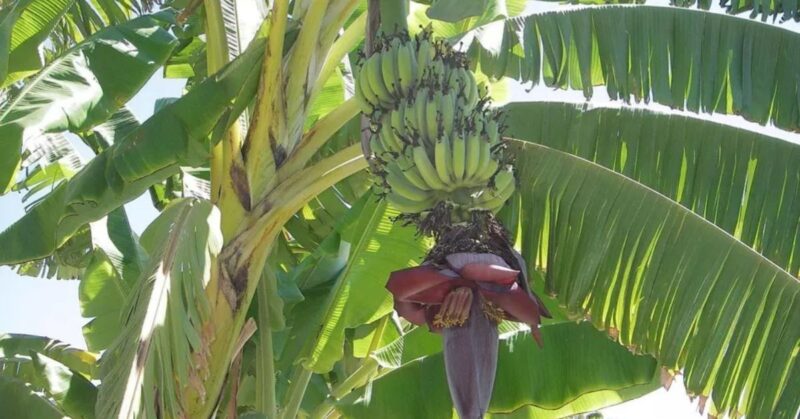The banana tree is not a tree but a giant herb

The Banana Tree: A Giant Herb in Disguise
Did you know that the banana tree is not actually a tree, but a giant herb? Yes, you read that right! Despite its towering appearance, the banana tree belongs to the herbaceous plant family. Let’s delve deeper into this fascinating fact and uncover why the banana tree is classified as a herb rather than a tree.
The Botanical Background
To understand why the banana tree is considered an herb, let’s first explore the scientific classification of plants. Generally, trees are characterized by a woody stem, called a trunk, which supports branches, leaves, flowers, and fruits. However, the banana tree’s structure differs from typical trees.
Banana plants are scientifically classified as part of the genus Musa, which belongs to the family Musaceae. While many banana varieties exist, most of them are hybrids derived from two wild species: Musa acuminata and Musa balbisiana. These plants originate from Southeast Asia but have spread throughout tropical regions worldwide.
Herb or Tree: The Distinctive Features
Several key characteristics set the banana tree apart from true trees and classify it as a herb.
Absence of Secondary Growth: One notable distinction is that banana plants lack secondary growth. True trees develop secondary growth, which leads to the thickening of their trunks over time. In contrast, the “trunk” of a banana tree is a pseudostem, formed by tightly bound leaf sheaths.
Soft Structure: Unlike the sturdy and rigid trunks of trees, the pseudostems of banana plants consist of succulent and fleshy layers. These layers provide the necessary support for the plant but lack the rigidity of true wood.
Life Cycle: Herbaceous plants, including the banana tree, complete their life cycle within a year. A banana tree shoots up from an underground rhizome, rapidly grows, flowers, and produces fruits, all in a single growing season. After the fruits mature, the pseudostem naturally withers and dies, while the rhizome remains underground awaiting the next cycle.
Fruit-bearing: Bananas are the defining feature of the Musa genus. The fruits produced by banana plants are botanically classified as berries and are typically elongated and curved. These delicious fruits contain nutrients and seeds, making them an essential food source for many cultures worldwide.
The Implications of Being a Giant Herb
Understanding that the banana tree is, in fact, an herb changes our perception of this remarkable plant and its preferred growing conditions. Being a herbaceous plant, the banana tree requires a warm and tropical climate to thrive. It needs abundant sunshine, high humidity, and well-draining soil to grow to its fullest potential.
Furthermore, describing the banana tree as a giant herb highlights the unique properties and versatility of this plant. Not only do banana plants provide delicious and nutritious fruits, but their leaves are also used in many cultures worldwide for various purposes. From cooking to handicrafts, banana leaves have been utilized for centuries due to their large size, flexibility, and waterproof nature.
In conclusion, despite its misleading name, the banana tree is, in fact, a giant herb. Through its distinctive features and life cycle, the banana tree sets itself apart from traditional trees. Understanding the botanical nature of this remarkable plant gives us a deeper appreciation for its contribution to our lives and its vast ecological significance.

Image: A lush and vibrant banana tree in all its herbaceous glory.

Image: A bunch of ripe bananas hanging from a banana tree, showcasing the unique fruit-bearing characteristic of this giant herb.
Related Posts
Quick Links
Legal Stuff

